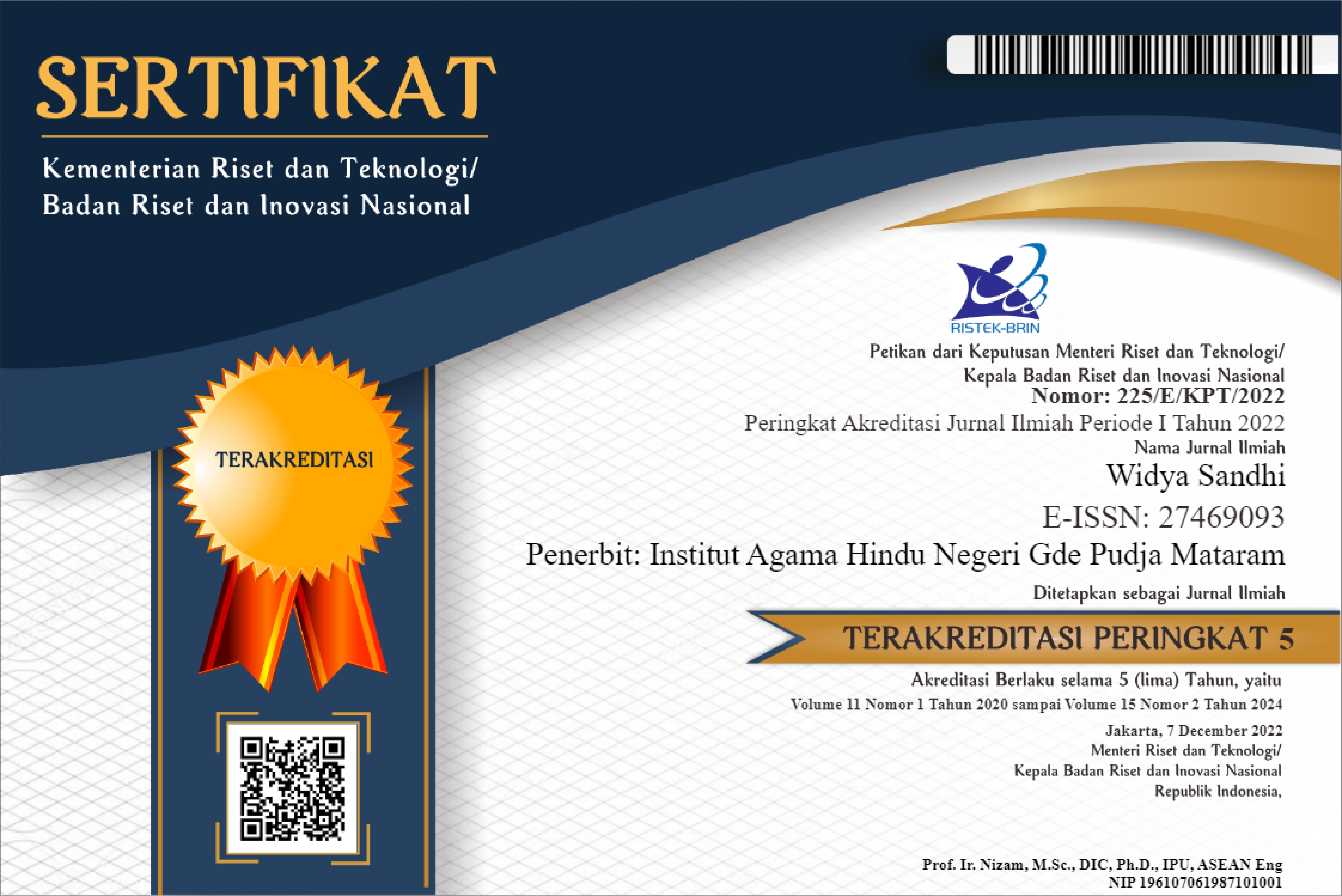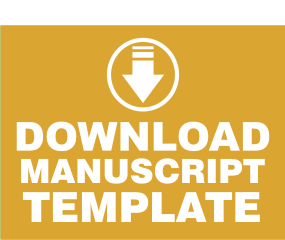SARANA UPAKARA BANTEN PANJANG ILANG DALAM UPACARA NGABEN PADA UMAT HINDU DI KOTA MATARAM
Abstract
This study aims to examine the upakara, namely banten panjang ilang used in ngaben ceremony in the city of Mataram, West Nusa Tenggara. This research is focused on three important aspects related to the use of banten panjang ilang in the implementation of ngaben ceremony in the city of Mataram, namely the form, function, and meaning of upakara means. This research is designed in the form of qualitative descriptive. With regard to it, the data presented in the form of qualitative data and supported by data in the form of numbers. The result of the research shows that the means of upakara banten panjang ilang which until now its existence is still used as the complementary ceremony of pitra yadnya (ceremony of the dead) at Hindu society in Mataram City. The banten panjang ilang form consists of several ornaments that have similarities between one location and another. In this case the values of beauty are seen as expressions of the art soul that makes them. The banten panjang ilang function essentially serves as an adulteration that is shown to the bhuta kala when it inhibits the Atma's journey. The symbolic meaning of the banten panjang ilang as the gift of the Atma to the catur sanak in order to accelerate the process of traveling to meet both parents. Banten panjang ilang as an offering to Supranatual forces of the guard in the noetic realms, namely Sang Suratma and his helpers. at the time of cleaning when the delivery is placed on delivery banten. Banten panjang ilang used at the time of cleaning at the “pengiriman” ceremony. Banten panjang ilang as a moral and cultural guidance of Hindu that emphasizes decency as an ancestral heritage in the past.
Authors who publish with this journal agree to the following terms:
- Authors retain copyright and grant the journal right of first publication with the work simultaneously licensed under a Creative Commons Attribution-ShareAlike 4.0 International License. that allows others to share the work with an acknowledgment of the work's authorship and initial publication in this journal.
- Authors are able to enter into separate, additional contractual arrangements for the non-exclusive distribution of the journal's published version of the work (e.g., post it to an institutional repository or publish it in a book), with an acknowledgment of its initial publication in this journal.
- Authors are permitted and encouraged to post their work online (e.g., in institutional repositories or on their website) prior to and during the submission process, as it can lead to productive exchanges, as well as earlier and greater citation of published work (See The Effect of Open Access).






.jpg)




